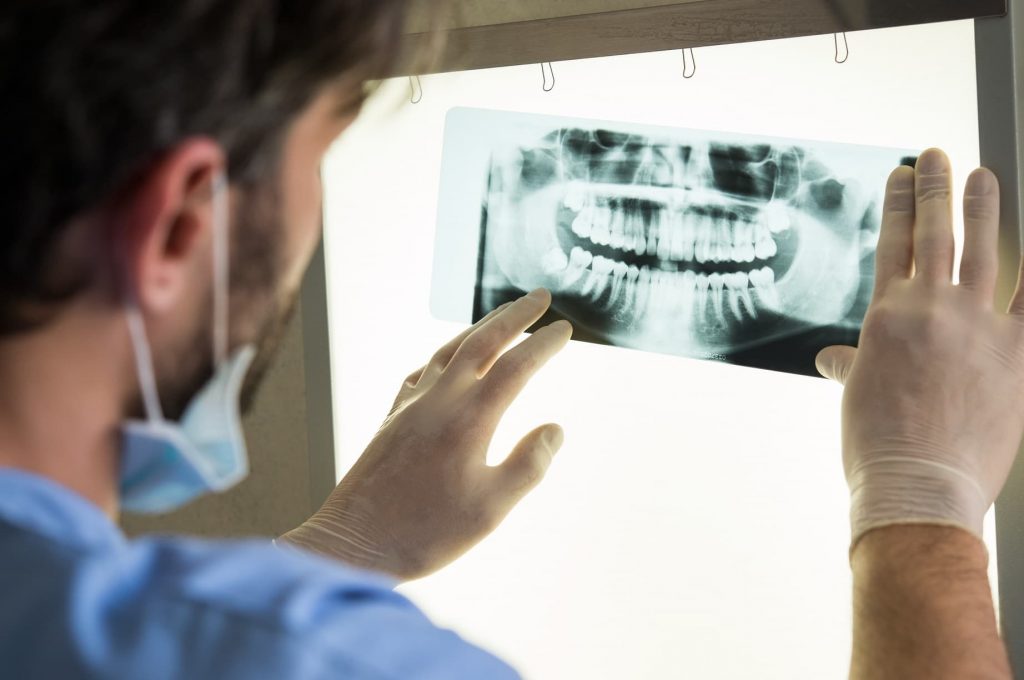Dental X-Rays
Proper oral hygiene habits are absolutely essential to one’s oral and overall health. The idea that an ounce of prevention is worth a pound of cure is quite literally true when it comes to your oral health, and this is why brushing and flossing daily as well as receiving professional cleaning from your dentist every six months is so important.
One of the key reasons that proper oral hygiene habits include twice yearly visits to the dentist is because your dentist is able to not only diagnose and treat oral health issues that are occurring, but he can also detect issues that you may be entirely unaware of and address these issues before they become major problems. One of the ways they do this is through the use of dental x-rays.

About Dental X-Rays
You may think that the only time to get dental x-rays is when you have an oral health issue that needs to be addressed and resolved, so there is no point in having them taken when your oral health appears to be just fine. It’s true that dental x-rays can be wonderfully useful for diagnostic purposes, but they are also essential for preventative care. There are many instances where dental issues that are just beginning to arise can only be detected through the use of dental x-rays. Needless to say, catching these issues early on can save the individual a considerable amount of time, money and discomfort in the future.
The most common form of dental x-rays are intraoral x-rays, which provide great detail of the tooth, bone and supporting tissues in the mouth. Using these x-rays, your dentist will be able to:
- Detect areas of decay between teeth and even below fillings
- Check the health of tooth roots
- Check the bony area all around each tooth to determine whether there are any infections
- Diagnose periodontal disease where it’s occurring
- Locate abscesses or cysts
- Determine the status of any developing teeth
- Ascertain whether there are any developmental abnormalities that need to addressed
Bite-wing x-rays are the most common type of intraoral x-ray, and they involve biting down on a device that holds the film in position in your mouth during the x-ray. This normally only takes a few moments, but can provide your dentist with a lot of very helpful information about the small areas in between your teeth that cannot be seen during a visual examination of your mouth.
Your dentist will determine how often you should receive dental x-rays depending upon a variety of factors, not the least of which is your present oral health and general health condition and when you have last had dental x-rays taken. If you are transferring from a different dentist, your new dentist will want to know whether you have had recent dental x-rays taken so he can simply request a copy of these rather than taking a whole new set.
Some individuals express concern about receiving dental x-rays due to the radiation they deliver. Where this is an issue, it is important to understand dental x-rays and weigh the benefits against the risks. According to the National Academy of Sciences, the low doses of radiation that occur as a result of receiving dental x-rays shouldn’t prevent individuals from seeking care as a result of concerns about cancer risks. In fact, individuals are exposed to about the same amount of radiation in a single day just through the sun, minerals in the earth and other sources. That said, if you have any questions about whether receiving dental x-rays is appropriate and necessary for you, contact your dentist. Your dentist understands your oral and general health history, as well as your risk for disease. He also understands the value in taking a limited number of dental x-rays at certain times in order to better assess your oral health situation while also limiting the amount of radiation you receive over time.
For more information about dental x-rays, contact Dr. Nurminsky today.
